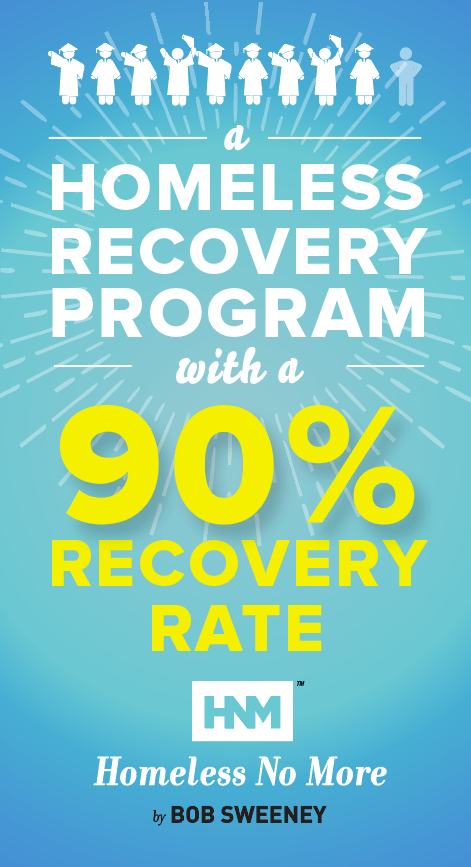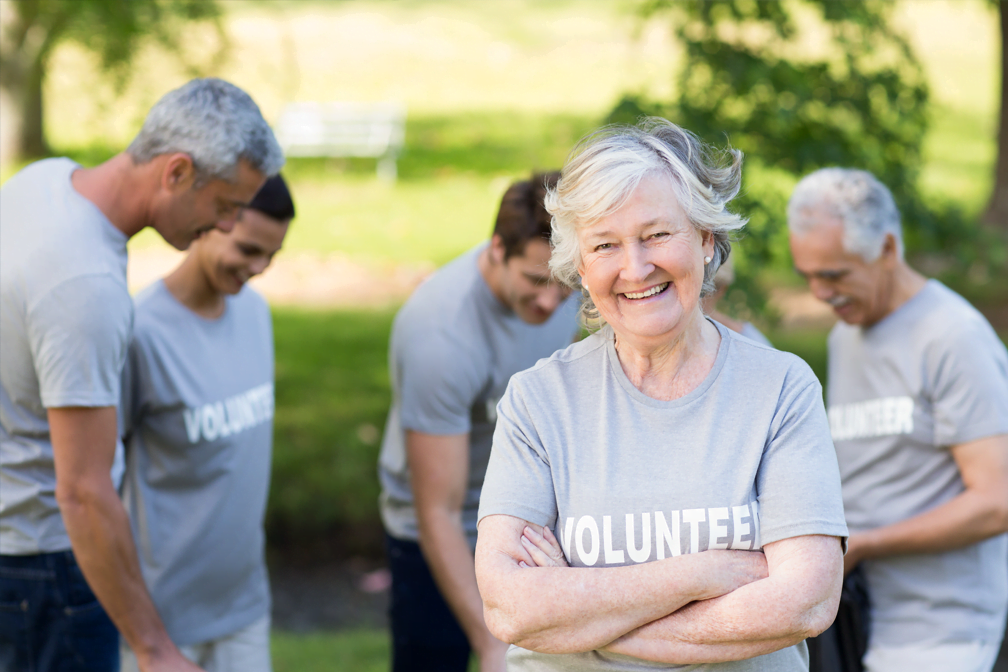In the heart of our communities across the United States, the shadow of homelessness stretches wide, encompassing a vast array of stories, challenges, and unmet needs. The growing concern of homelessness is not just a statistic; it’s a lived reality for an increasing number of our neighbors, calling for both individual and collective action to offer support, hope, and tangible solutions.
As of 2023, the United States is witnessing an alarming trend in homelessness. Approximately 653,100 individuals were experiencing homelessness on any given night, marking a significant 12% increase from the previous year. This uptick represents one of the highest counts since records began, underscoring the urgency of addressing this crisis. 1
Notably, homelessness is not uniformly distributed across the country. Certain states and cities bear a disproportionate burden, with California, New York, Florida, Washington, and Texas accounting for 55% of the total homeless population. Major urban centers, in particular, have become focal points of this challenge, with nearly a quarter of the nation’s homeless population residing in New York City and Los Angeles alone. 2
Behind these numbers lie diverse stories and complex factors contributing to homelessness. From veterans struggling to reintegrate into civilian life to families and youth facing unprecedented economic pressures, the paths into homelessness are varied. The impact is further compounded by racial and ethnic disparities, with Black, Latino, and Indigenous populations disproportionately represented among the homeless. 3
Addressing homelessness requires a multifaceted approach, emphasizing not just immediate relief but also long-term strategies to prevent homelessness and promote reintegration into society.
Addressing homelessness requires a multifaceted approach, emphasizing not just immediate relief but also long-term strategies to prevent homelessness and promote reintegration into society. It’s about more than providing shelter; it’s about offering a pathway to stability and dignity. Through community engagement, advocacy, and support for organizations making a tangible difference, like the Homeless No More program, we can contribute to a collective effort to address this pressing issue. With a 90% success rate in helping individuals off the streets, Homeless No More is a testament to what can be achieved when compassion, action, and support converge.
In reflecting on the biblical call to aid those in need, we are reminded of the moral imperative to extend our hands and hearts to the homeless. By contributing to solutions, advocating for policy changes, and supporting targeted interventions, we can make a meaningful difference in the lives of many. It’s a journey of compassion, commitment, and community action — one that invites each of us to be a beacon of hope and a builder of bridges back to stability and security.
Let’s stand together to address the challenge of homelessness in our communities. Through understanding, action, and compassion, we can pave the way to a future where those who want to recover from homelessness can. Join us in this vital mission. See how you can help and be part of the solution.
Unique Ways to Help the Homeless
In our journey to address homelessness, traditional methods of support — shelters, soup kitchens, and clothing drives — are invaluable. Yet, as we delve deeper into the heart of the issue, it becomes evident that unique, innovative approaches can significantly amplify our impact. Here are a few pioneering ways we can extend our support to homeless individuals in our communities, transcending conventional methods.
- Mobile Services and Apps: Technology offers a powerful tool in reaching and assisting the homeless. Mobile apps can connect homeless individuals with immediate resources, such as nearby shelters, free meal programs, and healthcare services. Additionally, mobile healthcare units bring medical services directly to those in need, addressing barriers to healthcare access. Unfortunately, there’s no guarantee every homeless person has a phone or access to one. Because of this fact, we cannot just focus on mobile apps as we implement pioneering projects. .
- Skills and Employment Training: Empowering the homeless through job training and education provides a pathway to self-sufficiency. Programs, like Homeless No More, that offer skills training, resume workshops, and job placement services equip individuals with the tools necessary to rebuild their lives and secure stable employment — creating lasting recovery.
- Legal Assistance: Legal issues can be a significant barrier for those trying to escape homelessness. Offering pro bono legal services to help with identification recovery, outstanding warrants, and housing disputes can remove obstacles to obtaining employment, housing, and government assistance.
- Arts and Community Involvement: Engaging homeless individuals in the arts and community projects fosters a sense of belonging and self-expression. Art programs, community gardens, and involvement in local events can boost morale, provide therapeutic outlets, and encourage community integration. When a homeless person lacks their basic needs, expecting interaction on the community level in arts is somewhat wishful thinking. Yes, some people can be reached via the arts, which is why it is an initiative that should be encouraged to continue; it just cannot be the only way to reach the homeless and provide the hope of lasting recovery.
- Housing First Models: The Housing First approach, which prioritizes providing the homeless with permanent housing without preconditions, has gained traction for its approach. Some argue that by securing housing first, individuals are better positioned to address other aspects of their lives, such as employment, health, and relationships. An integrated approach of providing ongoing but temporary stable housing (12 months) AND combining it with the Homeless No More program is the most effective, long-lasting solution for lasting homeless recovery. To better understand the issue with Housing First, if a homeless person or family receives a voucher for housing they have that voucher for 12 months. If, during that time of assistance, they do not decipher the job market, receive freedom from their addictions, address relationship issues (including family of origin, domestic violence and emotional regulation), navigate the financial pitfalls of poverty and receive mental health care, they will become homeless again as soon as the voucher expires. The hope of lasting recovery from homelessness is erroneously placed in Housing First Models. The permanent solution to homelessness has to incorporate all the facets and dynamics of cause.
Support Homeless No More
As we explore these unique avenues to assist the homeless, the impact of your contribution to programs like Homeless No More cannot be overstated. With an impressive 90% success rate in helping people off the streets, Homeless No More stands at the forefront of change, offering not just hope, but real, tangible progress. Your support can extend the reach of innovative solutions that address homelessness at its core, transforming lives and communities across the US. Discover how your contribution can make a difference and join us in this vital mission. Together, we can pioneer a future where homelessness is not a life sentence but a challenge overcome with compassion, innovation, and collective action. See how you can help and be part of the solution today

How Can I Help the Homeless in My Area?
Helping the homeless in our communities requires more than just goodwill; it necessitates a strategic approach that respects the dignity of those we aim to assist. Below, I outline various practical tips for directly aiding homeless individuals in your area, emphasizing the importance of meaningful support.
- Shelters and Services: Local homeless shelters and resource centers are crucial first steps for those in need. Organizations such as The Salvation Army provide temporary refuge and can connect individuals with further resources. These centers offer access to food, clothing, and essential services, highlighting the importance of inquiring about available assistance or utilizing tools like the HUD’s Find Shelter tool to locate aid.
- Community Involvement: Volunteering at local organizations, such as soup kitchens, offers direct support to those affected by homelessness. Moreover, engaging in local events provides opportunities to contribute further, whether through food drives, clothing collections, or skill-based volunteering like tutoring or career mentoring.
- Fundraising: Financial contributions play a significant role in supporting the homeless. Organizing community fundraising events, like bake sales or charity auctions, can significantly boost the resources available to homeless support organizations.
- Education and Advocacy: Understanding the underlying causes of homelessness and advocating for policies that address these issues are key. This includes supporting affordable housing initiatives, improved mental health services, and job training programs. 4
- Employment Opportunities: If you’re in a position to do so, offering employment to those experiencing homelessness can have a transformative impact. Partnering with organizations that provide job training and placement can facilitate this process. 5
- Donations of Items: While food and clothing are essential, don’t overlook the need for items like socks, underwear, and hygiene products. Such donations address immediate needs and contribute to the dignity of those receiving them. 6
- Inclusion and Emotional Support: Small acts of kindness, such as engaging in conversation or simply offering a smile, can make a significant difference. Encourage local businesses and public facilities to adopt inclusive practices towards homeless individuals. 7
- Support Housing Initiatives: Backing permanent supportive housing (PSH) initiatives, which combine housing with essential services, is an effective way to combat homelessness. These programs have shown success in helping individuals maintain housing stability. 8
Every action, no matter how small, contributes to the larger efforts to alleviate homelessness. By adopting a multifaceted approach that includes practical support, advocacy, and emotional compassion, we can collectively make a significant impact on the lives of those experiencing homelessness in our communities.
How to Help the Homeless in Your Community in Texas
Focusing on Texas, with its unique challenges and opportunities related to homelessness, there are several specific strategies and avenues through which individuals and communities can make a significant difference. Addressing homelessness in Texas involves understanding the multifaceted reasons behind the issue, including drugs, alcohol, mental illness, broken relationships, and poverty.
One effective strategy is engaging with and supporting local organizations that have a direct impact on homelessness. These organizations often tackle various facets of homelessness, such as providing essential health care, securing housing, and offering legal aid or food security. By honing in on one cause at a time, such as improving access to affordable housing or connecting people with employment services, volunteers and donors can make a more focused and impactful contribution. 9 Homeless No More is unique because it seeks to address all the facets of homelessness by incorporating wrap-around services that address the five triggers of homelessness in combination with mentoring and counseling.
Furthermore, the Texas Homeless Network plays a crucial role in coordinating advocacy work, analyzing community data, and educating Texans on homelessness within their local areas. Their efforts extend across 215 counties, demonstrating the importance of statewide collaboration and community involvement in addressing homelessness. 10
For those in Texas looking to make a difference: Joining efforts with organizations like Homeless No More can significantly amplify the impact on homelessness alleviation. Homeless No More‘s initiatives, with their emphasis on long-term solutions, align closely with the broader strategies employed across Texas to address homelessness. By contributing to or volunteering with programs that prioritize comprehensive support services that address the underlying causes of homelessness, individuals can help ensure that more Texans experiencing homelessness find not just shelter, but a path towards stability and independence.
To learn more about the underlying causes of homelessness, visit the “ABOUT US” section of our website.
The collective efforts of state programs, local organizations, and individual actions underscore the importance of a multi-faceted approach to tackling homelessness. By focusing on specific challenges, changing public perceptions, and supporting initiatives that offer both immediate relief and long-term solutions, Texans can contribute to meaningful change and support their neighbors in need.
How Can the Government Help the Homeless?
The government plays a crucial role in addressing homelessness through policy and public services, and there are multiple avenues through which it can enhance its support for homeless individuals. The U.S. Department of Health and Human Services (HHS) administers several programs aimed at tackling homelessness, including Head Start for children from homeless families, the Social Services Block Grant (SSBG) program, Temporary Assistance for Needy Families (TANF), and the Child Care and Development Fund (CCDF). These initiatives offer support across a spectrum that includes early education, social services, temporary financial assistance, and subsidized child care, all designed to help families in need towards achieving self-sufficiency and stability.
The U.S. Interagency Council on Homelessness (USICH) underscores the multifaceted approach required to address the homelessness crisis, highlighting the 2023 increase in homelessness and emphasizing the shortage of affordable housing as an issue in many procuring stable housing. Poverty, one of the five triggers of homelessness, can be exacerbated by the lack of affordable housing. The Homeless No More program, in its holistic approach, also recognizes the need to not only provide immediate shelter but also to tackle, as a variety of government agencies lead the way, the broader societal issues that lead to homelessness. 11
Individuals can advocate for effective governmental action by supporting policies and programs that address these root causes of homelessness (such as drugs, alcohol, mental illness, broken relationships, and poverty). Engaging with local and national representatives to voice support for increased funding and resources for housing, health care, and social services is critical. Additionally, community involvement in supporting local homeless services organizations and initiatives can amplify the impact of governmental efforts. To learn more about the underlying causes of homelessness, visit the “ABOUT US” section of our website.
The collective efforts of government, community organizations, and individual advocacy are essential in creating comprehensive solutions to aid the homeless. By understanding the available resources and supporting initiatives aimed at providing both immediate relief and long-term stability, individuals can play a vital role in advocating for and contributing to making headway in solving this complex issue.
How Can We Help Homeless People?
Helping homeless individuals in our communities involves more than just providing immediate needs like food and shelter. It requires a compassionate approach that recognizes their humanity, dignity, and the unique challenges they face. Engaging with and supporting homeless people with kindness and respect can make a significant difference in their lives. Here are some general tips for compassionate engagement and support:
- Educate Yourself and Others: Understand the root causes of homelessness, such as drugs, alcohol, mental illness, broken relationships, and poverty. Dispelling stereotypes and educating those around you creates a more supportive environment for addressing homelessness. 12
- Volunteer: Dedicate your time to local shelters, food banks, and other organizations that support homeless individuals. Volunteering offers direct help and personal engagement, providing essential services and a human connection to those in need.
- Donate Wisely: Contribute items that are often in high demand at shelters and service organizations, such as socks, toiletries, and seasonal clothing. Monetary donations to reputable organizations like the Homeless No More program allow them to allocate resources where they’re needed most.
- Advocate for Change: Support policies and initiatives that aim to solve the contributing causes of homelessness. This can include advocating for affordable housing, healthcare access, and social services. Contacting your representatives to express support for such policies can lead to systemic change. 13
- Show Respect and Kindness: Small acts of kindness can have a profound impact. Acknowledge homeless individuals you encounter with a smile or conversation, respecting their dignity and humanity. Remember, homelessness does not define a person’s value or character.
- Support Employment Opportunities: Encourage local businesses to consider hiring homeless individuals or support social enterprises that do so. Employment is a critical step towards independence and stability.
- Participate in or Organize Community Events: Events that raise awareness, funds, or collect donations for homeless services can have a significant impact. Community engagement also fosters a sense of belonging and support for those who are homeless.
- Offer Support for Mental Health and Substance Abuse: Advocate for and support programs that offer mental health and substance abuse services to the homeless population. These services are crucial for addressing some of the underlying issues that contribute to homelessness.
By adopting a compassionate and proactive approach, we can contribute to meaningful support and positive change in the lives of homeless individuals in our communities. Each action, no matter how small, is a step towards creating a more inclusive and supportive society.
How to Help a Homeless Person Get Back on Their Feet
To help a homeless person regain stability and independence, several programs and actions have been designed across the country:
- Housing First Programs: These initiatives prioritize providing homeless individuals with stable housing as the initial step towards recovery and independence. The premise is that once housing is secured, individuals are in a better position to address other issues such as employment, health, and education. While Housing First models have shown effectiveness in various studies and are supported by both governmental and non-governmental organizations, the inclusion of wrap-around services and pinpointing the reasons behind homelessness so a lasting solution can be found are paramount in the incorporation of shelter with the Homeless No More program.
- Education and Job Training Programs: Providing access to education and job training is crucial for helping homeless individuals gain the skills necessary for employment. Many community organizations and social services offer GED preparation, vocational training, and job placement services to assist individuals in transitioning into the workforce. Included in the Homeless No More program are the education and social services that provide for job readiness and interviewing techniques.
- Health Care Services: Access to health care, including mental health and substance abuse treatment, is essential for individuals experiencing homelessness. Programs like the Health Care for the Homeless (HCH) offer comprehensive health care services to address the physical and mental health needs of homeless populations.
- Social Services and Case Management: Case management services play a vital role in helping homeless individuals navigate the variety of services available to them, including social services, legal aid, and family support. Social Services Block Grants (SSBG) and Temporary Assistance for Needy Families (TANF) are examples of programs that provide states with the flexibility to offer a range of services tailored to the needs of homeless individuals and families.
- Child Care Support: For homeless families, accessing affordable child care is a significant barrier to employment and stability. The Child Care and Development Fund (CCDF) assists eligible families in obtaining child care, allowing parents to work or participate in job training programs. On-site childcare in shelters so that parents can participate in the Homeless No More program are the ideal support for families with children.
- Advocacy and Policy Reform: Advocating for policies that address the challenges that often accompany homelessness, such as the shortage of affordable housing and the need for comprehensive health services, is crucial. Individuals can support advocacy groups working to influence policy and expand services for homeless populations.
- Community Involvement and Support: Community-based programs that involve local residents in supporting homeless individuals can foster a supportive environment conducive to recovery and reintegration. Volunteering, donations, and community education efforts all contribute to a broader societal response to homelessness.
By supporting and participating in these programs and actions, individuals and communities can assist homeless people in overcoming barriers to stability and independence, laying the foundation for a more secure and hopeful future.
Helping the Homeless Articles
The role of community and individual efforts in addressing homelessness is multifaceted, emphasizing both the power of collective action and the importance of personal engagement. A compelling example comes from Houston Endowment, where a unified, community-wide strategy led to a significant reduction in homelessness. By aligning goals and strategies across multiple agencies, Houston was able to shift from merely managing homelessness to actively reducing it, demonstrating the impact of collaborative efforts and housing-first strategies. 14
Moreover, an article from the National Library of Medicine points out the importance of friendship and personal connections in supporting those experiencing homelessness. Individual actions, such as volunteering, advocating for policy changes, and simply offering a listening ear, play a crucial role in providing emotional and practical support. This approach goes beyond addressing the immediate needs by fostering a sense of belonging and community. 15
Central Oregon offers another perspective, highlighting the challenges faced by homeless youth, including a notable increase in homelessness among minors. This example underlines the interconnectedness of homelessness with broader societal issues such as access to child care and the rising costs of living, which can exacerbate the difficulties faced by vulnerable populations. 16
These stories and insights underscore the necessity of a comprehensive approach to addressing homelessness, combining systemic solutions with individual acts of kindness and support. By fostering empathy, advocating for change, and working together as a community, it’s possible to make a meaningful difference in the lives of those experiencing homelessness.
Addressing Key Questions
How Can I Help Homeless People in My Neighborhood?
To make an impactful difference in the lives of those experiencing homelessness, you can consider direct actions such as buying them a meal, bringing them coffee or bottled water, and engaging in conversation to understand their situation better. However, in doing so, your actions impact one person on that one day. The more impactful actions are ones that provide a long-term solution to the problem of homelessness. Real and lasting change does not come from spare change or one meal. Becoming Homeless No More happens when all the triggers of homelessness have been addressed and overcome with a new and vital support system in place to prevent relapsing into old hangups and habits. Volunteering at local shelters or with outreach programs can provide broader support, while donating essential items like blankets, pillows, and household goods directly addresses immediate needs. Monetary donations to shelters ensure resources are available where they’re most needed.
Real and lasting change does not come from spare change or one meal.
What Are 5 Things a Homeless Person Could Use?
Essential items that can significantly benefit a homeless person include:
- Meals or Non-perishable Foods: Offering a warm meal or easily stored food items can address immediate hunger needs.
- Hydration: Bottled water or warm drinks can alleviate dehydration and provide comfort.
- Clothing and Blankets: Warm clothing and blankets are critical, especially during colder months.
- Hygiene Products: Basic hygiene products such as toothpaste, soap, and feminine care items are often in short supply.
- Companionship: Sometimes, a listening ear and acknowledgment can offer emotional support that’s as crucial as physical items. Doing this more than once can grow into a vital mentor relationship.
It’s essential to approach these acts of kindness without judgment, recognizing the complex circumstances that lead to homelessness. 17
What Does the Bible Say About Helping the Homeless?
The Bible underscores the importance of helping those in need, emphasizing compassion, love, and the moral duty to support the less fortunate. Verses like Proverbs 19:17, which states that lending to the poor is akin to lending to the Lord, and Matthew 25:35-40, where Jesus talks about the virtue of aiding those who are hungry, thirsty, or without shelter, highlight the significance of kindness and aid towards the homeless as expressions of faith and obedience to God’s teachings.
“Whoever is kind to the poor lends to the Lord, and he will reward them for what they have done.” – Proverbs 19:17
“For I was hungry and you gave me something to eat, I was thirsty and you gave me something to drink, I was a stranger and you invited me in, I needed clothes and you clothed me, I was sick and you looked after me, I was in prison and you came to visit me.’ “Then the righteous will answer him, ‘Lord, when did we see you hungry and feed you, or thirsty and give you something to drink? When did we see you a stranger and invite you in, or needing clothes and clothe you? When did we see you sick or in prison and go to visit you?’ “The King will reply, ‘Truly I tell you, whatever you did for one of the least of these brothers and sisters of mine, you did for me.’” – Matthew 25:35-40
On that note, why not create a Blessing Bag for the homeless?
What Do I Put in a Blessing Bag?
When assembling blessing bags for the homeless, it’s crucial to be mindful of including useful and respectful items. Avoid adding perishable items that may spoil, anything requiring cooking or preparation, and items that could be harmful if misused, such as alcohol-based mouthwash or razors. Instead, focus on non-perishable food items, bottled water, hygiene products that are easy to use (like wet wipes or hand sanitizers), socks, and perhaps a prepaid phone card for emergency calls. Ensuring the contents are practical, respectful, and sensitive to the recipients’ needs can make these bags genuinely beneficial.
Through understanding, compassion, and targeted support, individuals can make a significant difference in the lives of homeless people in their communities, reflecting both a practical approach to aid and a spiritual commitment to caring for others.
Community efforts play a crucial role in alleviating homelessness, leveraging the pillars of equity, evidence, and collaboration to create a comprehensive response system. This approach includes strategies for increasing access to housing, enhancing homelessness response, and implementing prevention measures. Everyone has the power to contribute to this cause, whether through direct action, supporting policy changes, or volunteering with local organizations.
Join us at Homeless No More in our mission to provide a pathway out of homelessness. With a proven 90% success rate, your support can extend our reach and impact, ensuring more individuals and families have access to the resources they need to rebuild their lives. Be part of the solution and see how you can help today.
References
- https://www.security.org/resources/homeless-statistics/
- https://endhomelessness.org/homelessness-in-america/homelessness-statistics/state-of-homelessness/
- Ibid.
- Deb Preston, https://debpreston.com/helping-the-homeless/
- Ibid.
- Ibid.
- Ibid.
- Ibid.
- https://www.thn.org/
- https://www.texastribune.org/2019/12/23/homeless-texas-explain-austin-greg-abbott/
- https://www.hhs.gov/programs/social-services/homelessness/programs/index.html
- https://www.hhs.gov/programs/social-services/homelessness/programs/index.html
- Ibid.
- Ann B. Stern, https://www.houstonendowment.org/perspective/solving-complex-social-issues-7-lessons-learned/
- Stephanie L. Barker and Nick Maguir, National Library of Medicine https://www.ncbi.nlm.nih.gov/pmc/articles/PMC5438434/
- By Anna Kaminski The Bulletin, https://www.bendbulletin.com/homeless/central-oregon-ranks-top-in-the-nation-for-homeless-youth-and-families-new-data-shows/article_279fefe0-d4d1-11ed-ab5c-13ac21644407.html
- Iva Ursano, https://amazingmemovement.com/how-to-help-homeless-people/
0013





